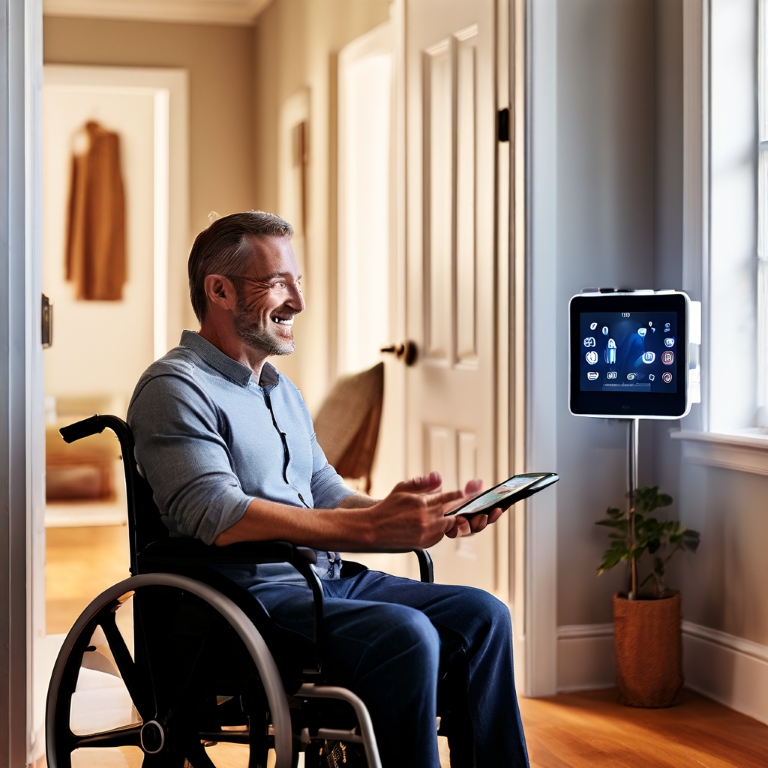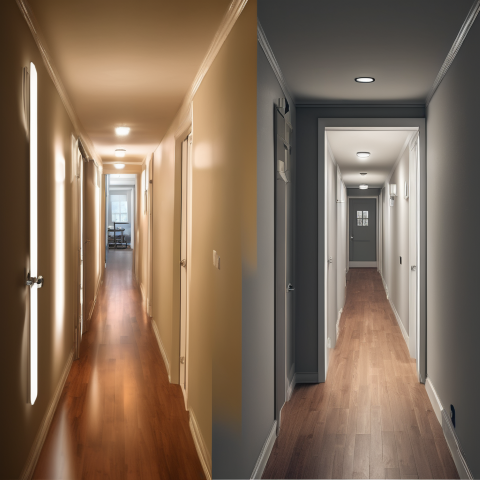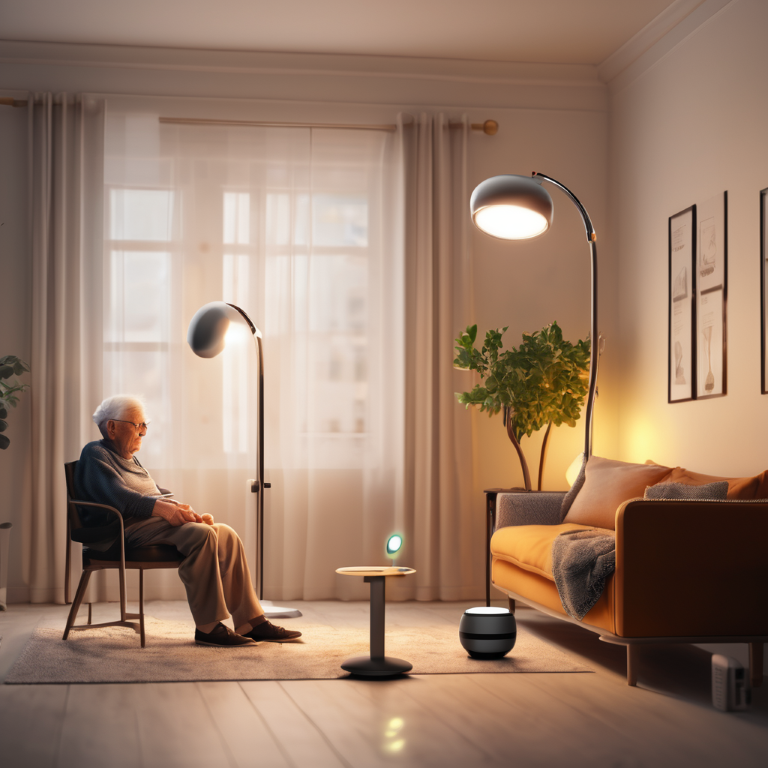Just picture yourself lying in bed or sitting in a wheelchair and being able to easily turn on/off the lights, set the humidity regulator, or lock/unlock your doors. Not only is it a luxury in the context of convenience, but it is also seen as a solid base for liberty, safety, and the enhancement of life’s qualitAy among elderly people and those with certain types of health issues. I would now like to explore how smart home devices and systems for people with different disabilities help them have a more complete, autonomous life while staying within their home environment.
How Smart Home Technology Transforms Lives
The benefits of smart home technology for the elderly and disabled are multifaceted and far-reaching:
• Enhanced Convenience & Accessibility: Voice assistants and devices that are controlled by apps prevent users from entirely depending on delicate manipulations that need to be performed manually in order to access controls, switches or machines. Tasks that would have been impossible to accomplish in the past are now achieved with ease.
• Increased Safety & Security: Intelligent doorbells coupled with video, automatic lights, along with a set of interwoven sensors would promote vigilance and avert mishaps, discourage break-ins. This thereby gives a private person and worried relatives tranquility.
• Energy Conservation: People with movement problems, who may find it hard to change them during the day rely heavily on this. Smart thermostats, blinds or lighting systems can be programmed or respond to sensors. They reduce energy use and utility costs.
• Effortless Communication & Connection: Through speaking to one’s phone and use of various communication applications, communication with loved ones, caretakers, and persons in emergency departments is simplified. This helps in preventing oneself from being lonely and confused hence timely assistance is available.
• Promoting Mental Wellbeing: A sense of personal effectiveness imbues individuals who can master their surroundings and act alone with freedom and mental health, this is what self-efficacy is all about. Such an example would be Smart homes for the elderly and disabled because they are able to prevent feelings of powerlessness or reliance.

Smart Home Solutions for Diverse Disabilities
Let’s examine specific scenarios where smart home technologies provide targeted solutions for the elderly and disabled:
• Mobility Impairments: The key to activating lights, appliances, thermostats, and entertainment services is through voice control using smart speakers. For instance, such as caregivers or deliveries, smart locks provide secure access without the resident being required to physically open the door hence saving power as well as averting interference with their independence.
• Visual Impairment: Smart speakers have become essential for providing information, news, reminders, and instructing other smart devices. Using smart lighting that can follow routines which are either voice-activated or depend on time, one can easily navigate around securely. Coupling routines with such physical switches not only increases but also diversifies the executive strategies when visual interfaces are out of reach.
• Hearing Impairment: Instead of using sound alerts for doorbells, phone calls, or alarms, people are now receiving visual notifications on connected devices such as smartphones and tablets. There are smart doorbells that enable two-way video communication enabling “in-person” interactions without physical presence.
• Cognitive Difficulties: Smart home for the elderly and disabled Individuals experiencing cognitive challenges can find an advantage in smart home routines and reminders to help them manage their schedules, treatment and daily duties. By sensoring potential issues early enough, the detectors further enhance safety level and decrease stress levels for caretakers in countless households.
Key Smart Home Tools for the Elderly and Disabled
• Smart Speakers & Assistants: The foundation for voice control, empowering users to interact with a wide range of compatible devices.
• Smart Lighting: Color-changing bulbs, dimmers, motion-activated lights provide adaptability and safety.
• Smart Plugs & App-Controlled Appliances: Enable simple control of traditional devices, breathing new life into older appliances and making them accessible.
• Smart Thermostats: Programmable heating and cooling, plus voice or app-based adjustment, conserve energy and ensure comfort regardless of mobility limitations.
• Smart Locks & Video Doorbells: Enhance safety, independence, and grant controlled access to trusted individuals.
• Medical Alert Systems Can leverage smart home infrastructure for additional layers of communication and emergency monitoring, with features like automatic fall detection.

Finding the Right Fit for a Smart Home for the Elderly and Disabled
Here’s how to ensure a smart home for the elderly and disabled truly empowers a person:
• Needs Come First: Focus on specific challenges faced by individuals and identify technologies that are in line with them. Avoid the temptation of ‘cool’ gadgets that don’t meet actual needs.
• User-friendliness is Key: Prioritize intuitive interfaces,
• Professional Consultations: When it comes to people’s specific needs, it is the therapists who work with this group alongside those experts in home technology.
• Financial Resources: Do not allow the cost to stand as a barrier to life transforming technology, such as research grants, assistive technology programs or bundled services from home security companies.
Smart home technology makes significant changes for the disabled and the aged people. Making considerations on the specific needs, selecting the necessary technology, making them user friendly before looking for them, will result into a more useful smart home. To enable the old live independently, stay safe and enjoy quality living standards in their homes, a combination of effort will lead to the most useful smart homes in the future.
Let’s Share & Innovate: Do you use smart home technology to support an aging parent or family member with a disability or an elderly individual? Post your experiences and recommendations down below! Learning and motivation for further advancement in this sector come through shared insight.
Share via:

